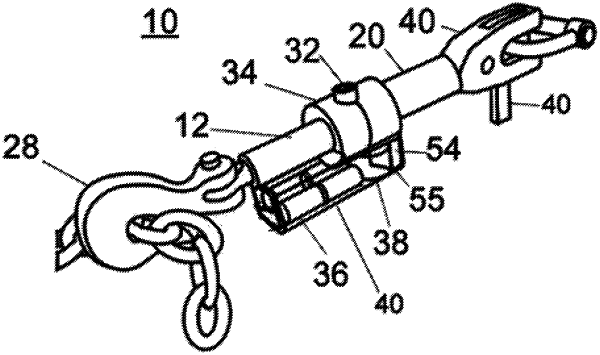| CPC B60P 7/0861 (2013.01) [B60P 7/083 (2013.01); G01L 5/04 (2013.01); G01L 5/047 (2013.01); G01L 5/10 (2013.01); B65D 2203/10 (2013.01)] | 16 Claims |

|
1. A cargo restraint system comprising:
a body;
a first connecting end and a second connecting end on opposing sides of the body, wherein the first and second connecting ends are each coupled to a securing member which is used to restrain the cargo;
a motor, disposed in the body, coupled to the first connecting end, wherein operation of the motor causes the first connecting end to move toward the body or away from the body;
one or more load sensors coupled to the first connecting end and/or the second connecting end;
a global positioning device, positioned in or on the body; and
a controller coupled to the one or more load sensors and a transmitter, the controller configured to:
receive tension information from the one or more load sensors;
receive location information from the global positioning device;
transmit transport data to a remote device, wherein the transport data comprises the tension information and the location information; and
automatically increase or decrease the tension on the securing member when the tension on the securing member is above or below a predetermined tension by operating the motor to move the first connecting end toward the body, or away from the body, as appropriate, based on the received tension information.
|